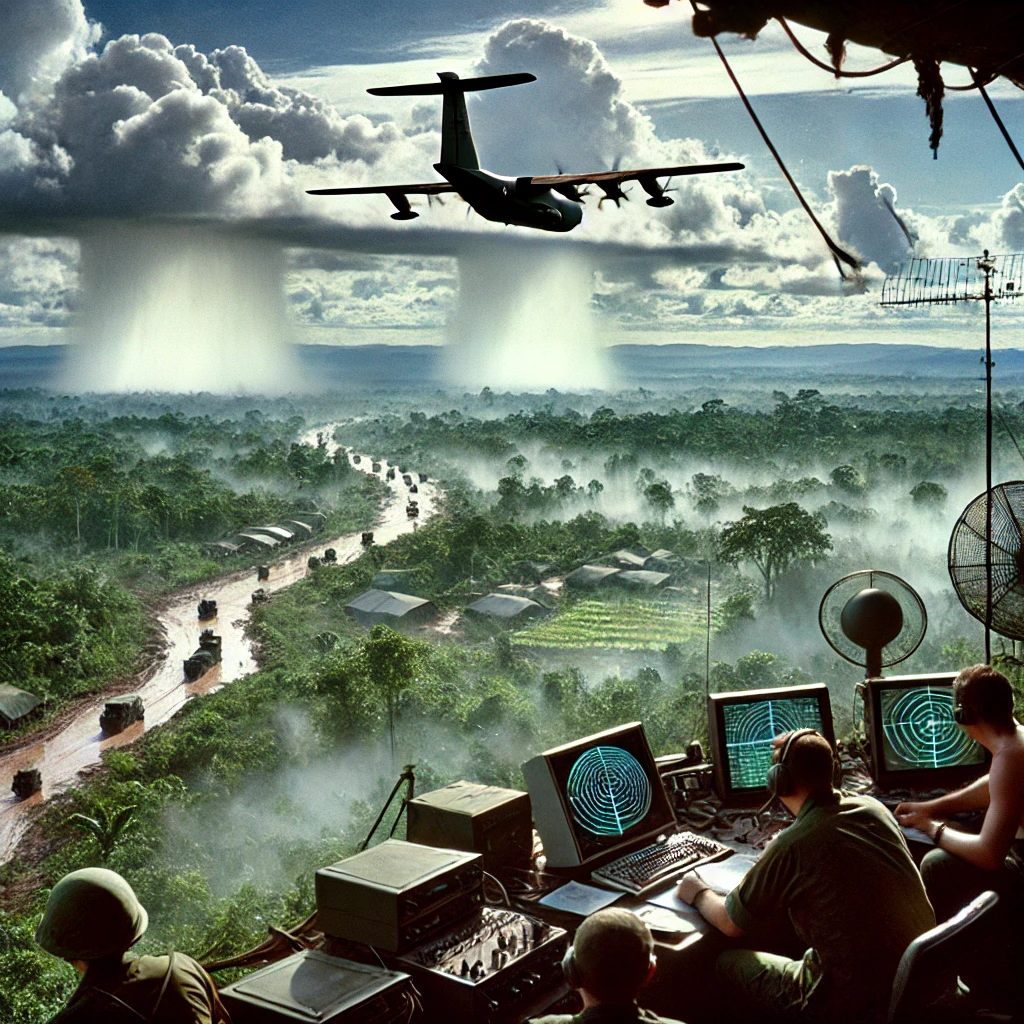Operation Popeye Military Extension of Monsoon Season Weather Warfare Vietnam
Operation Popeye was a covert weather modification program conducted by the U.S. military during the Vietnam War from 1967 to 1972. Its primary goal was to extend the monsoon season in Southeast Asia, particularly over the Ho Chi Minh Trail, to disrupt enemy supply routes by making roads muddy and impassable. The operation involved cloud seeding to increase rainfall, a direct application of the weather modification techniques first explored in earlier projects like Project Cirrus.
https://rumble.com/search/all?q=operation%20popeye
Here’s a detailed look at Operation Popeye and its connections to earlier efforts:
Connections to Project Cirrus:
- Weather Modification Technology:
- Project Cirrus, which began in the late 1940s, laid the groundwork for the development of cloud seeding technology. Although it was primarily a research-based initiative, it provided the scientific foundation that would later be applied in military operations like Operation Popeye.
- Scientific Continuation:
- After Project Cirrus, research into weather control continued through initiatives such as Project Stormfury, which experimented with hurricane modification. These projects refined cloud seeding techniques that were ultimately employed for strategic military purposes in Operation Popeye.
Military Applications:
- Covert Operation:
- Operation Popeye was highly classified and aimed at using weather as a tactical weapon. By seeding clouds with silver iodide, the U.S. military increased rainfall over key areas to flood enemy supply lines, causing logistical disruptions.
- Geographic Focus:
- While Project Cirrus and other early weather modification experiments focused on natural storm systems, Popeye targeted specific regions, particularly along the Ho Chi Minh Trail in Laos, Cambodia, and Vietnam. The aim was to make transport and travel difficult for North Vietnamese forces.
- Testing and Ethical Concerns:
- Although most of Operation Popeye’s weather manipulation took place over Southeast Asia, weather modification experiments have also been tested in the U.S. Project Cirrus and subsequent programs performed early tests over American territories, raising questions about the ethical implications of manipulating natural weather patterns for military or civilian purposes.
- Official Denial and Secrecy:
- Operation Popeye remained secret for several years, and when it came to light, it sparked public concern about weather warfare and environmental manipulation. The U.S. government officially ended the project after its exposure, and subsequent treaties, like the Environmental Modification Convention (ENMOD) in 1977, banned the use of weather modification for military purposes.
Relation to U.S. Testing:
- Weather modification research in the U.S. included tests not only for military applications but also for civilian purposes such as drought relief and storm management. Projects like Popeye and Cirrus represented the dual nature of such research—balancing military strategic use with the potential civilian benefits.
Operation Popeye during the Vietnam War: Military cloud seeding over the Ho Chi Minh Trail to disrupt enemy logistics.
